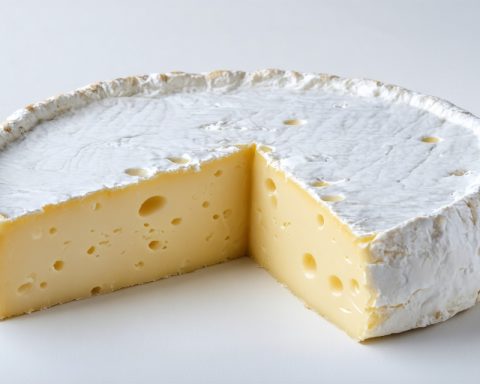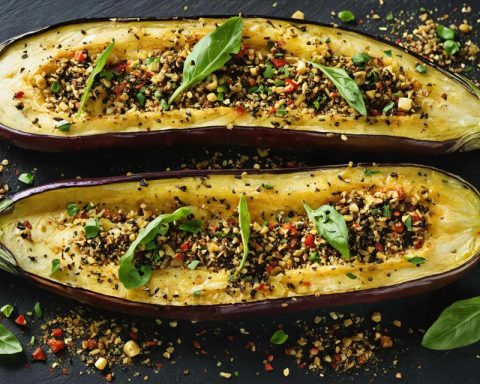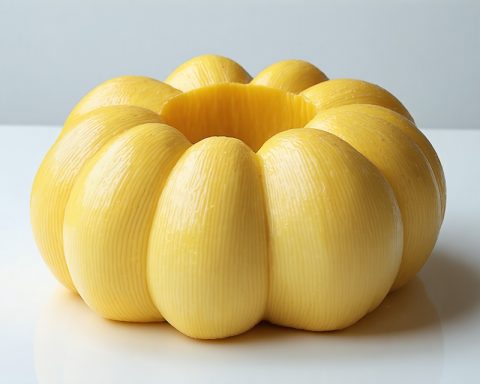Imagine printing a bowl of steaming Toscansk Bönsoppa directly from your kitchen counter. As 3D food printing technologies break into mainstream culinary culture, this traditional Tuscan bean soup could soon be part of a tech revolution in your home.
The essence of Toscansk Bönsoppa lies in its simple yet rich blend of cannellini beans, tomatoes, hearty vegetables, and herbs. The beauty is in its rustic ingredients, which, thanks to 3D printing technology, can now be recreated via meticulously loaded cartridges filled with biodegradable compounds resembling each ingredient’s taste and texture.
This culinary innovation offers myriad advantages: from user-customized spice levels and nutritional adjustments to ensuring minimal food waste by precisely printing the exact serving size. Moreover, such technology can bring the flavors of traditional Italian cuisine to places where these ingredients are hard to come by.
While it’s exciting to envision printed Toscansk Bönsoppa, purists might argue that the art of a hand-cooked soup carries an irreplaceable charm. Nevertheless, as additive manufacturing technology evolves, it promises to broaden culinary possibilities, transforming the way we interact with food.
Looking ahead, kitchens of the future might seamlessly blend this old-world soup with new-world technology, offering a customized culinary experience that’s rich in tradition yet embracing the digital age. Who knew the path from bean to broth could be so futuristically delicious?
The Health Benefits of Toscansk Bönsoppa: Tradition Meets Innovation
Toscansk Bönsoppa, a traditional Tuscan bean soup, is a remarkable dish appreciated for its wholesome simplicity and rich flavors. As the world of culinary arts eagerly embraces the future with innovations like 3D food printing, this beloved soup stands at the intriguing intersection of tradition and technology. But beyond its technological allure, Toscansk Bönsoppa offers a wealth of health benefits, primarily owing to its key ingredients: cannellini beans, tomatoes, hearty vegetables, and herbs.
Cannellini Beans: The Heart of Health
Cannellini beans, a staple in this savory soup, are an excellent source of plant-based protein and fiber. These legumes promote satiety, which can aid in weight management by reducing overall calorie intake. High in iron, they support healthy hemoglobin levels and improve oxygen transport throughout the body. Furthermore, cannellini beans are rich in folate, an essential nutrient that helps reduce the risk of certain birth defects and supports cardiovascular health.
Tomatoes: A Burst of Antioxidants
Tomatoes contribute an important component to both the flavor and health profile of Toscansk Bönsoppa. They are renowned for their high content of lycopene, an antioxidant linked to reducing the risk of chronic diseases, such as heart disease and cancer. Additionally, tomatoes are rich in vitamins A and C, which are powerful antioxidants that strengthen the immune system and promote healthy skin and vision. Their inclusion in the soup adds not only depth to the flavor but also a boost of nutritional value.
Hearty Vegetables: Nutrient Powerhouses
The incorporation of an array of hearty vegetables like carrots, celery, and onions in Toscansk Bönsoppa enhances its nutritional profile. Carrots are loaded with beta-carotene, which the body converts into vitamin A, supporting eye health. Celery is known for its anti-inflammatory properties and contributes to cardiovascular wellness. Onions, rich in antioxidants, have been shown to possess potential benefits for heart health and blood sugar regulation. Together, these vegetables provide essential vitamins and minerals, improving overall health and well-being.
Herbs: Flavorful Health Enhancers
Lastly, no Toscansk Bönsoppa would be complete without its aromatic herbs, such as rosemary, thyme, and sage. Rosemary is touted for its ability to improve circulation and digestion. Thyme is a great source of vitamin C, aiding the immune system, and may also have antibacterial properties. Sage contains compounds that enhance brain function and improve memory. These herbs not only elevate the soup’s flavor profile but also infuse it with additional health benefits.
In conclusion, while the concept of printing Toscansk Bönsoppa may captivate with its futuristic appeal, the health benefits of this dish remain rooted in its traditional ingredients. As 3D printing technology offers new culinary frontiers, the timeless blend of nutritious elements in Toscansk Bönsoppa assures it will continue to nourish both body and soul for generations to come.
Is 3D Food Printing Set to Revolutionize Our Kitchens?
As 3D food printing steadily enters mainstream culinary arenas, traditional dishes like Toscansk Bönsoppa are set to become part of an innovative home-cooking revolution. This technological marvel brings more than just the potential for variety in home kitchens; it invites curiosity about its specifications, advantages, and future applications.
Features and Specifications
3D food printing technology operates by utilizing biodegradable cartridges that contain edibles resembling traditional ingredients in terms of taste and texture. These machines, much like traditional 3D printers, layer these elements to form complex dishes. This technique can precisely replicate the flavors of Toscansk Bönsoppa, offering the rustic taste of cannellini beans, tomatoes, and hearty vegetables.
Customization and User Control
One of the significant benefits of 3D food printing lies in its customization capabilities. Users can adjust spice levels, control nutritional content, and print exact serving sizes, minimizing food waste. This personalized approach could revolutionize dietary plans and cater to individual health needs, making nutritious meals more accessible.
Use Cases and Sustainability
In areas where certain ingredients are scarce, 3D printing can democratize cuisine flavors, bringing authentic Italian tastes to new regions. Additionally, the technology promises sustainability by reducing food production and waste, aligning with global green initiatives and catering to eco-conscious consumers.
Market Potential and Pricing
Market analysis suggests that as technology becomes more accessible, the adoption of 3D food printers will expand beyond haute cuisine restaurants into everyday homes. Current pricing for consumer models remains a barrier to widespread adoption, but trends indicate a potential decrease as production scales. Companies specializing in 3D food technology continue to innovate, predicting more affordable options for the average consumer.
Controversies and Limitations
Despite its innovations, 3D food printing faces debates surrounding authenticity and culinary tradition. Critics argue that it lacks the artisanal touch inherent in hand-cooked meals. Moreover, as with any new technology, concerns regarding intellectual property and food safety standards must be addressed.
Future Predictions and Innovations
Experts predict that as additive manufacturing technology advances, kitchens of the future will seamlessly incorporate these devices, allowing chefs and home cooks to explore a blend of tradition and innovation. With continued research and development, the possibilities are as diverse as they are delicious.
For further information on 3D food printing innovations, visit 3D Systems to explore how technology is transforming culinary arts.









